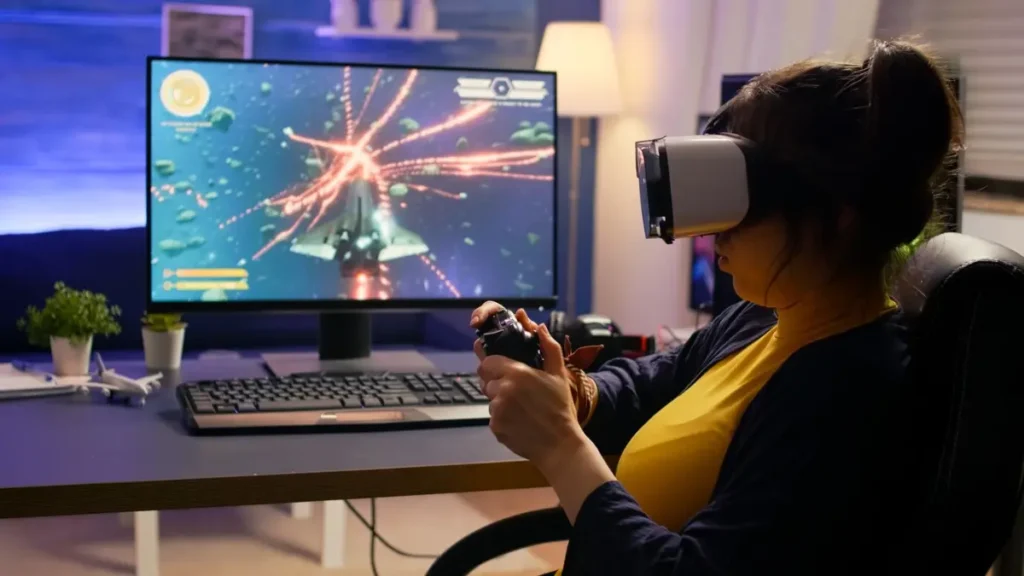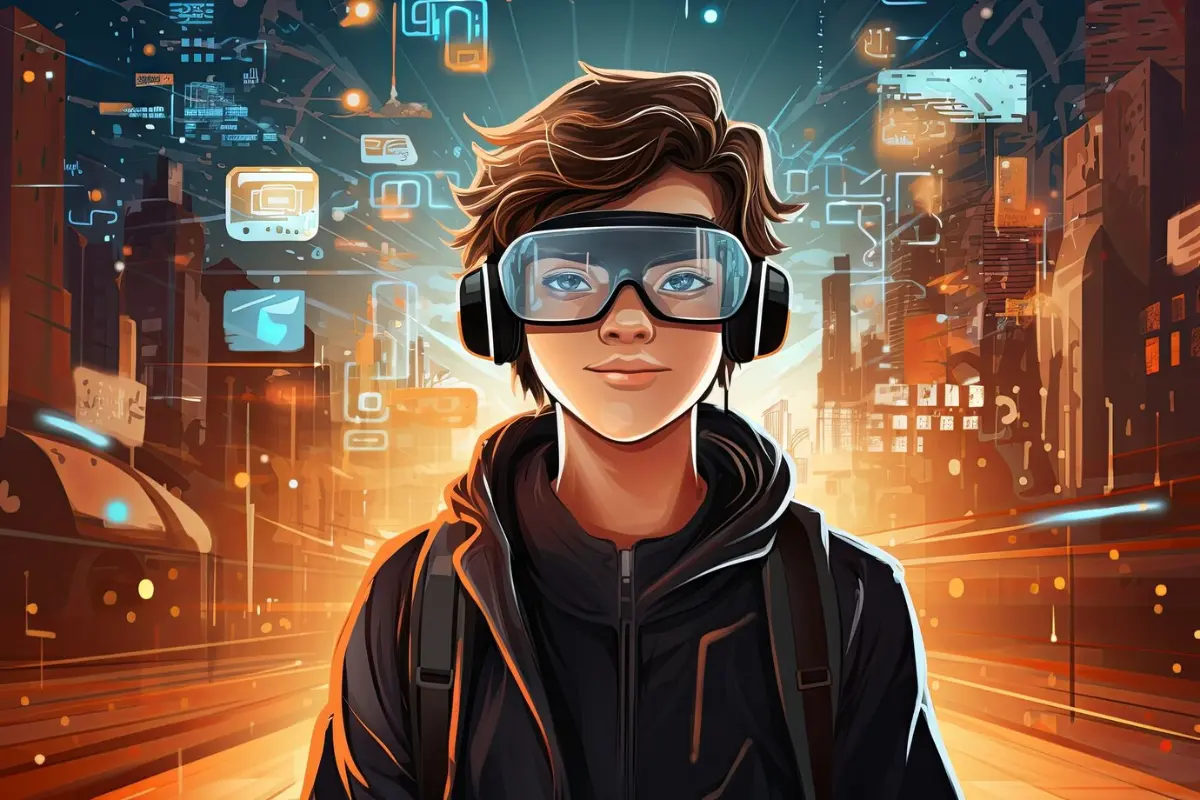The E-commerce Blog

AI in Video Game Development
Video games have come a long way from pixelated characters and basic soundtracks. Today’s games are immersive, cinematic, and often feel surprisingly lifelike. One of the biggest reasons for this transformation? Artificial intelligence.
AI in video game development is not just about making smarter enemies or better visuals. It’s about creating dynamic worlds, responsive characters, and personalised player experiences. From AI game design to procedural content generation, AI is reshaping the way games are made — and played.
In this post, we’ll explore how AI is driving intelligent gaming, the tools developers are using, and what the future holds for smart game development.
Why AI Matters in Game Development
Games have always needed logic. Enemies chase you, NPCs (non-playable characters) offer quests, and environments change based on your choices. In the past, these behaviours were scripted. Developers had to write rules for every possible interaction.
AI changes that.
Instead of hard-coded reactions, AI can create systems that adapt, learn, and react in real time. This makes games more unpredictable, immersive, and tailored to each player.
Key Roles of AI in Modern Games
1. Smarter Non-Player Characters (NPCs)

AI makes NPCs more believable. They can:
- React to your actions
- Navigate complex maps
- Make decisions under pressure
- Show personality traits like fear or confidence
For example, in stealth games, enemies might search for you based on sound or line of sight. In RPGs, allies might adjust their tactics based on your style of play.
2. Procedural Content Generation
This technique allows AI to create:
- Infinite maps
- New quests
- Puzzles and challenges
- Terrain and environments
Games like Minecraft and No Man’s Sky use procedural generation to create vast worlds without needing developers to build every detail manually.
This is key for smart game development — it saves time and offers endless replay value.
3. Adaptive Difficulty
AI tracks your skill level and adjusts the game in real time. Struggling with a boss fight? The system might ease the difficulty. Winning too easily? Enemies get smarter or more aggressive.
This approach keeps games engaging and accessible, without frustrating new players or boring veterans.
4. Personalised Storytelling
AI analyses your choices and creates storylines that reflect them. Your decisions shape the world, affecting how characters respond and what happens next.
This adds emotional weight to gameplay — and encourages replay to explore different outcomes.
5. Testing and Bug Detection

Developers also use AI behind the scenes. It can simulate thousands of gameplay hours to:
- Find bugs
- Test balance
- Spot crashes or errors
- Improve overall quality
This speeds up development and helps teams release smoother, more polished games.
Real-World Examples of AI Game Design
Middle-earth: Shadow of Mordor
This game introduced the “Nemesis System,” where enemies remember you. If one kills you and survives, they rise through the ranks, remember your tactics, and taunt you next time.
That’s AI game design in action — making every player’s experience unique.
Alien: Isolation
The alien in this game isn’t scripted. It uses two AI systems — one knows where you are, the other acts like it doesn’t. This creates a terrifying, unpredictable enemy that learns from your movements.
Left 4 Dead

This zombie shooter uses an AI Director that adjusts difficulty, item placement, and pacing based on your stress level and progress — creating a personalised horror experience every time.
Watch Dogs: Legion
This game lets you recruit and play as any character in the world. Each has unique traits and behaviours — many generated through AI — allowing for a huge range of strategies.
Read On Here!
Tools Behind Smart Game Development
Game developers now use a mix of AI frameworks and engines to bring these features to life. Some popular tools include:
Unity ML-Agents Toolkit
Adds machine learning to Unity games. Developers use it to train characters, enemies, and systems based on player behaviour.
Unreal Engine AI System
Offers tools for pathfinding, decision-making, and sensory perception. Used in many blockbuster games.
Procedural Content Generation Tools
Includes tools like Houdini and World Machine that help generate worlds, terrain, and assets using AI.
Behaviour Trees and Finite State Machines (FSMs)
Used for building decision-making systems for NPCs. AI chooses actions based on logic, context, and probability.
Benefits of AI in Game Development
1. Better Player Experience
Games become more immersive, responsive, and satisfying. AI can tailor gameplay to fit how you play — not the other way around.
2. Faster Development
AI automates repetitive tasks like terrain design or bug testing. This lets developers focus on creativity and storytelling.
3. Lower Costs
Smaller teams can create large, detailed games using AI tools. This opens the door for indie developers to compete with major studios.
4. Unlimited Replay Value
With procedural generation and dynamic storylines, no two playthroughs are the same. Players come back for more — again and again.
Challenges of Using AI in Games
While AI offers many benefits, it also brings challenges:
1. Unpredictable Outcomes
AI can sometimes behave in ways developers didn’t expect. This adds complexity to testing and balancing.
2. Performance Load
Advanced AI uses more computing power. Developers must balance smart systems with smooth gameplay.
3. Ethical Concerns
Some worry that AI might replace creative roles. But in most cases, AI enhances human creativity — not replaces it.
The Future of Intelligent Gaming
AI is already changing how we play. But what’s next? Here’s where intelligent gaming is headed:
Emotion-Aware NPCs
Characters may detect your tone or facial expressions and respond with empathy, fear, or anger.
Real-Time World Building
AI could generate quests, dialogue, and environments in real time — based on your actions and mood.
AI Player Companions
Instead of following basic commands, companions could learn from your choices and adapt to your style.
Lifelong Learning AI
Games could use long-term AI systems that grow smarter over weeks or months of play, reacting in deeper and more meaningful ways.
Cross-Platform AI Profiles
Your gaming AI might follow you from one title to another — learning your preferences and helping tailor new experiences.
The Power of AI in Game Design
AI is not replacing human creativity — it’s enhancing it. Developers now have tools to build more immersive, adaptive, and memorable games than ever before.
From smarter enemies to dynamic storylines and endless worlds, AI game design is reshaping the landscape of smart game development. Whether you’re a developer or a player, one thing is clear: intelligent gaming is the future — and the future has already begun.
You may also enjoy: Voice Assistants: Beyond Basic Commands









